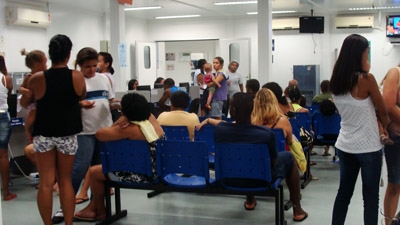Challenge
For the past two decades, Rio de Janeiro’s 6.2 million residents have been hard-hit by the city’s long-run economic decline, which exacerbated social and economic inequalities. Between 1985 and 2003, the economy of Rio, Brazil’s second largest city, has contracted at an average annual rate of 1.1%. Fiscal constraints in the aftermath of a mid-1990s fiscal crisis have further deteriorated the quality of municipal service delivery. The city’s poor make up about 13% of the population and nearly 19% of them live in slum neighborhoods with inadequate infrastructure, transportation, schools and health facilities. In addition, a large and expensive loan from Brazil’s National Treasury was a particular fiscal burden, although it included an option to reduce debt service costs by prepaying part of the outstanding balance.
Solution
In January, 2009, the newly elected Municipal Government committed itself to improving public service delivery and public sector efficiency and effectiveness, and promoting private sector development, while maintaining fiscal discipline. To that end, the Municipal and Federal Governments approached the World Bank for a Development Policy Loan (DPL) to alleviate Rio’s debt service burden. This was the Bank’s first DPL with a Municipality. It was aligned with the Bank’s Country Partnership Strategy, which identifies engagement with subnational jurisdictions to enhance the effectiveness of the Bank’s technical and financial resources. Brazilian municipalities are natural partners in pursuing the goals of the CPS because they provide many essential services.
The Rio Municipal Development Policy Loan, approved in July 2010 for US$1.045 billion, financed a portion of Rio’s existing debt and served as a platform for dialogue about policy issues, especially in Monitoring and Evaluation systems, Public-Private Partnerships, pension reform and budget management.
Results
The Operation’s results were in the following areas:
- Grew available resources by around 7% of current revenue.
- Prepaid the Municipal Government’s debt to the National Treasury and strengthened tax administration.
- Expanded public sector investments from 3.7% to 15.9% of total public expenditure, in bus rapid transit routes, schools, day care facilities, and health clinics.
- Expanded primary health care coverage from 6% of the population in 2009 to 40% in 2013, through a network of primary and urgent care clinics run by private, not-for-profit management companies.
- Improved learning outcomes through early childhood development, remedial literacy programs, innovative approaches for schools in dangerous neighborhoods, and improved teacher training and career development.
- Increased percentage of children with adequate reading skills at the end of grade 1 by 10 percentage points.
- Reduced percentage of children in grade 9 performing more than two years behind grade level by 7 percentage points.
- Improved public sector efficiency using a Public-Private Partnerships framework for projects in sanitation, sports facilities, waterfront revitalization and light rail transport.
- Simplified requirements and reduced the time to obtain a business license, from 20 days in 2010 to three days in 2013, for applications with low environmental and health impacts.
- Generated average savings of 39% on common goods and services in 2013, compared to 2010, through procurement reform and implementation of a centralized, electronic auction system. Reduced losses from an average of 4.9% in 2006-09 to 0.1% in 2012 using new stock management procedures piloted in the health system.
Bank Group Contribution
The Bank supported the Municipality with a Development Policy Loan in the amount of US$1.045 billion, disbursed in two tranches in 2010 and 2011. Two Technical Assistance operations provided additional support in several policy areas: the first, a PPP Reimbursable Advisory Services for US$609,000; and the second financed through a US$16.2 million Investment Loan.
Partners
The project was entirely financed by the Bank.
Moving Forward
The second of the Technical Assistance projects received Board approval in June 2013 and is expected to run through October 2017, providing additional support to several of the loan’s policy areas, including public investment management, Medium Term Expenditure Framework (MTEF) and health and education reform.
Beneficiaries
Policy actions under the DPL have primarily benefited low income households. Health and education outcomes are highly correlated with income and socio-economic status. The Government’s programs in these areas specifically targeted disadvantaged, underserved neighborhoods. Special attention to the needs of dangerous and violent neighborhoods was especially beneficial.

